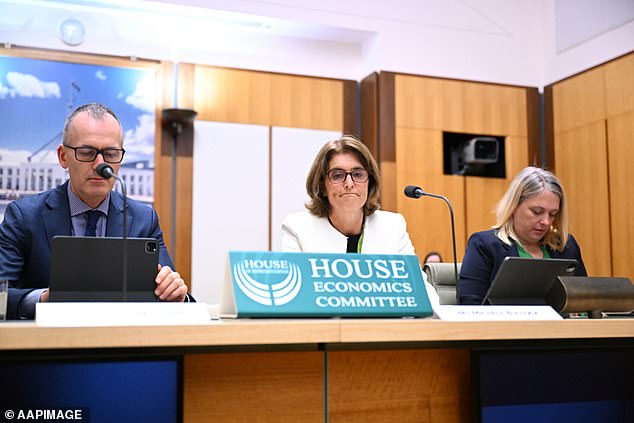- Reserve Bank chief Michele Bullock issued warning on cash
The head of the Reserve Bank of Australia has warned that the future of cash is in danger because it is expensive to distribute banknotes.
Michele Bullock painted a bleak picture of cash distribution during her first appearance before a parliamentary committee as RBA governor.
“As the use of cash for transactions has declined, the economics of cash distribution have come under pressure,” he said Friday.
“This was one of the main factors behind the merger of the two largest cash transportation providers last year.”
Michele Bullock painted a bleak picture of cash distribution during her first appearance before a parliamentary committee as RBA governor.
Armaguard and Prosegur Australia last year gained regulatory approval to merge, giving the new company Linfox Armaguard a 90 per cent share of Australia’s cash transport market.
This was based on a promise to the Australian Competition and Consumer Commission that it would continue to provide cash until 2026.
“Linfox Armaguard has since indicated that despite this, its cash distribution business remains unsustainable,” Ms Bullock said.
“The RBA places a high priority on the Australian community having good access to cash withdrawals and deposits.”
Before the merger, Armaguard had distribution agreements with Commonwealth Bank, ANZ and NAB, while Spanish company Prosegur had an agreement with Westpac.
Bullock said he would continue meeting with cash distribution industry leaders.
“These discussions are likely to continue for some months,” he said.
‘To develop a cash distribution model that is sustainable over the long term, some very complex issues will need to be addressed and will take some time to resolve.
“So I have encouraged the main actors to
Bullock also revealed that the RBA, owner of polymer banknote maker Note Printing Australia, would consult with indigenous groups on the design of the new $5 note, following the Queen’s death in 2022.
During the last financial year, 718 ATMs were withdrawn, Australian Prudential Regulation Authority data shows.
This came as 424 bank branches closed in the year to June.
The number of branches has plummeted by more than a third or 37 percent since June 2017, but in six years, the number of ATMs has plummeted by 59 percent.
Australia still has 5,693 ATMs, less than half the June 2017 level of 13,814.
The number of bank branches was reduced from 5,694 to 3,588.


